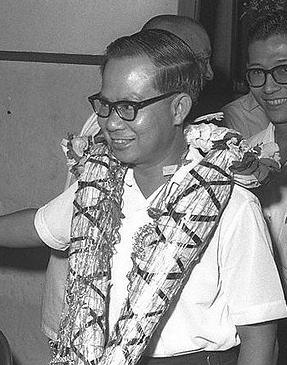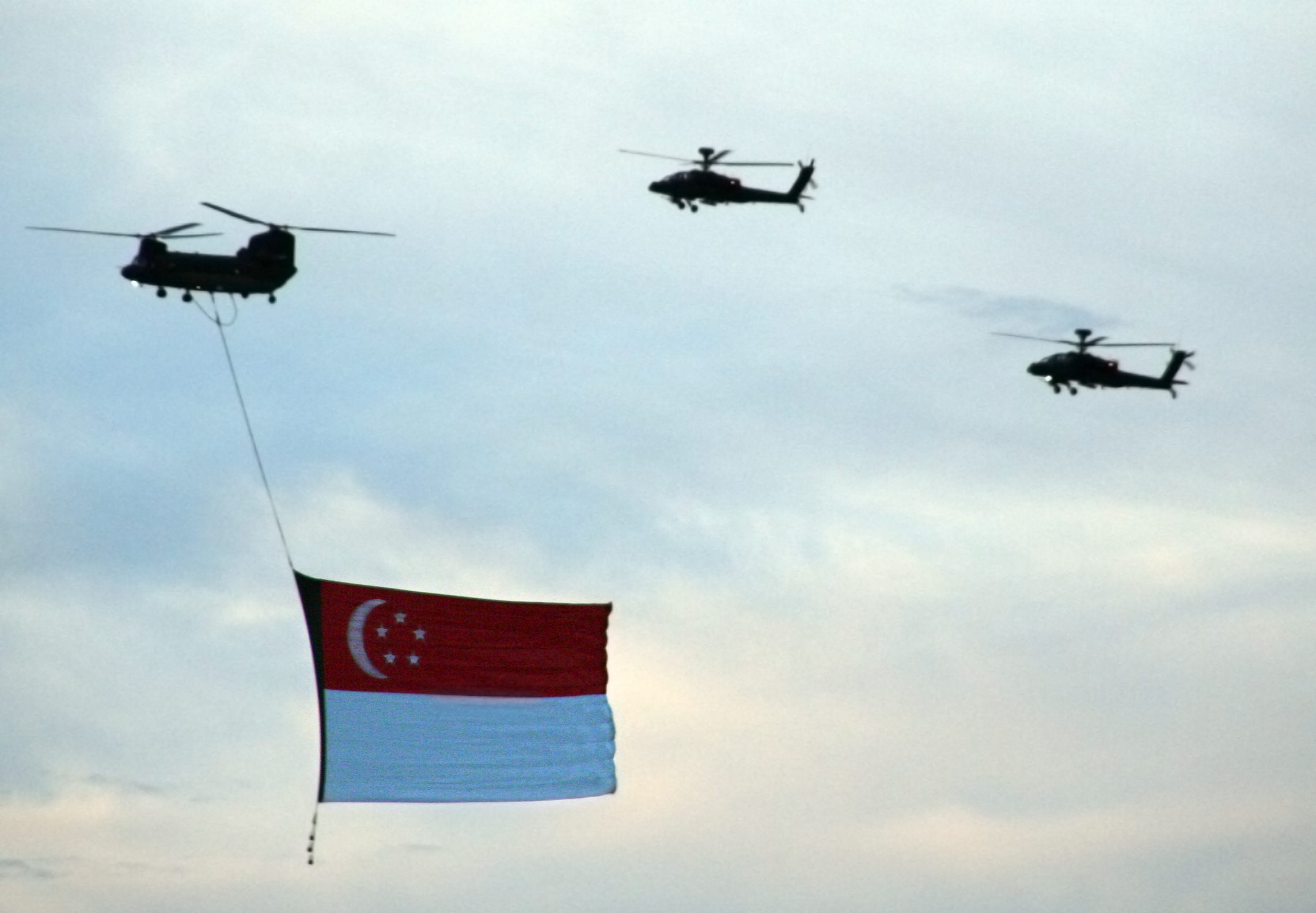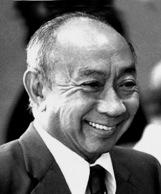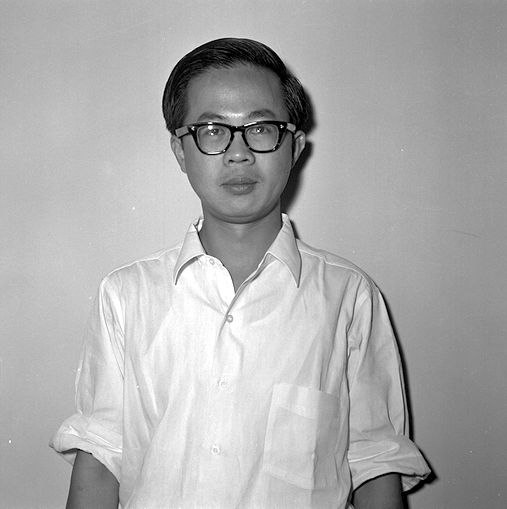The First Hands That Molded Singapore
On 5 June 1959, the first Cabinet of Singapore was formed by the People’s Action Party (PAP) after a landslide victory in the 1959 Singapore General Elections.
The victory was only the beginning for the PAP, as the new leaders of Singapore were faced with the mammoth task of navigating the young nation in an uncertain global and regional climate.
It was down to the first Cabinet of Singapore, which consisted of 9 core members from the PAP, to take up the challenge.
MustShareNews brings you the 9 extraordinary gentlemen who made up the first Cabinet of Singapore, and their contributions while in office.
1. Lee Kuan Yew
Portfolio: Prime Minister
What Did He Do While In Office?
After winning the 1959 General Election with the PAP, Lee Kuan Yew became the first Prime Minister of Singapore. He was the leader of the Cabinet, and was responsible for leading the other 8 Ministers into getting things done.
Once he assumed office, Mr Lee wasted no time introducing wide-ranging reforms for Singapore, affecting the construction of public housing, education, and industrialization plans.
The Prime Minister’s main priority at that time was establishing a state merger with Malaya. Back then, Singapore lacked vital natural resources and was economically dependent on Malaya. Lee felt that the merger was important for Singapore’s economic and political survival; the merger was also a strategy in preventing the rise of Communism in Singapore.
In 1962, Mr Lee led Singapore into a fierce referendum battle, convincing Singaporeans to vote for the merger in the face of physical threat from the Communists.
Mr Lee openly confronted the Communists, disregarding their reputation of being violent. The First Prime Minister of Singapore successfully led Singapore into merger with Malaya in 1963.
Life after the First Cabinet
After finding great success with the first cabinet, Lee went on to lead the PAP through 7 more General Elections victories and ruled Singapore as Prime Minister until 1990.
Mr Lee passed away earlier this year (23 March), and was given a state funeral.
2. Toh Chin Chye
Portfolio: Deputy Prime Minister
What Did He Do While In Office?
Apart from being the right hand man to Lee Kuan Yew in the fight against the Communists, Dr Toh also made lasting contributions to Singapore during his tenure in the first cabinet.
The PAP Chairman led a committee to design important symbols for Singapore to mark our sovereignty as a full fledgling state independent from the British control.
That’s right, Dr Toh had a hand in creating basically every symbol you have come to associate with Singapore.
From the coat of arms,
the state anthem,
and the state flag.
The state flag was personally designed by Dr Toh. He took great pains to design the state flag to symbolise Singapore as an inclusive state for all race groups.
In an interview with The New Paper dating 1995, Dr Toh explained that the crescent moon was added to take the Malay sentiments into account, while the five stars were to account for the Chinese sentiments — there are also five stars in the flag of China.
there are also five stars on the flag of the People’s Republic of China.
[There was a need to] remove any apprehension that we were building a Chinese state.
- Dr Toh Chin Chye
Dr Toh had also take the colours of the flag into account, he chose white to symbolise the unity of all the races in Singapore; the seven colours of the rainbow produce white when mixed together.
The PAP Chairman was also the king-maker — it was Dr Toh who decided that Lee Kuan Yew was to be the first Prime Minister of Singapore.
After the PAP won the 1959 elections, each core party member of the PAP was given a vote to decide whether Lee Kuan Yew or Ong Eng Guan would be the first Prime Minister of Singapore.
The vote ended in a tie (6-6), and Dr Toh cast his deciding vote in the favour of Lee Kuan Yew.
Life after the First Cabinet
After the first cabinet, Dr Toh carried on serving Singapore as the Minister for Science & Technology (1968-1975) and as the Minister for Health (1975-1981).
Dr Toh retired from politics in 1988 after serving as a PAP backbencher from 1981-1988. He passed away on 3 February 2012, and was given a state funeral.
3. Ong Pang Boon
Portfolio: Minister For Home Affairs
What Did He Do While In Office?
As the Minister for Home Affairs, Ong Pang Boon was tasked with transforming Singapore into a lawful society. Mr Ong’s contribution can be streamlined to two main areas.
He launched the “Anti-yellow culture” campaign
Mr Ong spearheaded the “anti-yellow culture” campaign in June 1959. The nationwide campaign was targeted at removing elements of “moral degeneration” — which included pornography, gambling dens, prostitution, and secret societies.
The campaign resulted in saloons and jukebox dens closing down, unapproved publication licenses revoked, clubs shut down, and films banned.
The motivation behind the campaign was to create a Malayan culture that “instil[ed]a sense of dignity, pride and social responsibility” among Singaporeans.
He led the fight against crime
The first Minister for Home Affairs was also responsible for restructuring the police force into a incorruptible and efficient force. Mr Ong pioneered the transformation of the Corrupt Practices Investigation Bureau (CPIB) into an organisation capable of eradicating corruption and bribery.
Mr Ong introduced new bills and policies to equip the police and Government with more powers to better deal with secret societies and organised crime; one example is heavier penalties being imposed for gang-related crimes.
He remains a controversial figure
However, Mr Ong is also a controversial figure as he was in charge of Operation Coldstore in 1953.
The Operation Coldstore was a state-sanctioned operation which aimed to detain subjects who were suspected of being Communist.
Operation Coldstore remains controversial to this day because a large bulk of the detainees were from the main opposition party of the PAP — the Barisan Sosialis (BS). Damage done by Operation Coldstore to the BS was so great that the BS-backed trade union collapsed and deregistered after the controversial operation.
Find out more about Operation Coldstore here.
Life after the First Cabinet
Mr Ong held several notable ministerial portfolios after his tenure in the first cabinet; he was the Minister for Education (1963-1970), Minister without Portfolio (1970-1971), Minister for Labour (1971-1981), Minister for Communications (1983), and Minister for Environment (1981-1984).
Mr Ong retired from politics in 1988 after serving as a PAP backbencher in the last 4 years of his political career.
The First Minister for Home Affairs is still alive, and was a eulogy speaker at Lee Kuan Yew’s funeral.
4. Goh Keng Swee
Portfolio: Minister for Finance
What Did He Do While In Office?
Dr Goh Keng Swee is one of the four main founding fathers of Singapore; with the other three being Lee Kuan Yew, Toh Chin Chye and Sinnathamby Rajaratnam.
As a Minister for Finance, Dr Goh was the economic architect for Singapore. Under his stewardship, Singapore turned a forecasted budget deficit of SGD$14 million into a surplus of SGD$1 million within a year. This was achieved through the implementation of strict fiscal discipline which included cutting salaries of civil servants.
Dr Goh also introduced two important economic reforms for Singapore.
He set up the Economic Development Board (EDB)
Dr Goh was an instrumental figure in setting up the Economic Development Board (EDB). The aim of EBD was to attract foreign investments into Singapore. The foreign investment allowed Singapore to further develop her economy.
He developed the Jurong Industrial Estate
Dr Goh introduced an industrialisation programme in Jurong to create employment opportunities for Singaporeans.
Dr Goh first offered incentives to draw in foreign investments to fund and jump-start the development of Jurong, which was a swamp at the time.
After the development of Jurong into an Industrial Estate, Dr Goh started to offer incentives to local and foreign business to locate at Jurong.
By 1962, the Jurong Industrial Estate was booming.
He encouraged Singapore to seperate from Malaysia
Apart from his contribution in the financial sector of Singapore, Dr Goh is also an important figure in the merger with Malaya. Like Lee Kuan Yew, Dr Goh too believed that the merger was crucial for Singapore’s survival.
After the merger, the reality on the ground was problematic for Singapore, and according to Lee Kuan Yew, Dr Goh had fought hard to protect Singapore’s interests while still trying to preserve merger.
It was the breakdown of talks for looser arrangement between Singapore and Malaysia in July 1965 that finally broke the camel’s back. Dr Goh on his own, decided that Singapore and Malaysia should have a clean break.
Let us take a moment to be grateful to Dr Goh for saving us from being directly affected by the ongoing quarrel between these two men —
Life after the First Cabinet
After the his tenure in the First Cabinet, Dr Goh made another notable contribution to Singapore as the Minister for the Interior and Defence (1965-1967) by introducing the National Service.
Dr Goh also served as the Minister of Finance for the second time (1967-1970), Minister for Defence (1970-1979), Minister for Education (1979 -1984), and finally as a Deputy Prime Minister (1973-1984).
Th founding father retired from politics in 1984, but continued to be active in the public sector through various appointments.
Dr Goh passed away on 14 May 2010, and was given a state funeral.
5. Kenneth Michael Byrne
Portfolio: Minister For Law, and Minister For Labour
What Did He Do While In Office?
Mr Byrne is the first ang moh Minister for Singapore. Although little can be researched about Mr Byrne, he made several noteworthy contribution while in office as well.
While Ministers like Dr Goh were busily upgrading the hardware of Singapore — the economy, Mr Byrne zhng-ed the software of Singapore — the workers’ rights.
As the Minister for Labour and Minister for Law, Mr Byrne introduced the Industrial Relations Act, the Employment Act, and the Women’s Charter in Singapore. The Industrial Relations Acts and the Employment Act ensured that workers in Singapore were not exploited by foreign investment companies in Singapore.
According to Mr Lee Kuan Yew’s eulogy at Goh Keng Swee’s funeral, Mr Byrne was also one of the founding member of the PAP along side Goh Keng Swee and Toh Chin Chye.
Life after the First Cabinet
Unfortunately, Mr Bryne lost the subsequent election in 1963 by a small margin of 193 votes. He later dropped out of politics.
However, Mr Byrne continued to contribute to Singapore through the public sector. He was the first chairman of the Tourist Promotion Board, as well as of the Central Provident Fund (CPF). The former Chairman of the CPF eventually retired from the the public sector in 1978, and ran his own law firm.
Mr Byrne passed away at the age of 77 on 12 May 1990.
6. Ong Eng Guan
Portfolio: Minister For National Development
What Did He Do While In Office?
Ong Eng Guan is the black sheep of the first cabinet; he had the shortest tenure in the cabinet and clashed with other cabinet ministers.
He is also the same Ong Eng Guan who marginally lost the Prime Minister position to Lee Kuan Yew.
Mr Ong remained an important member of the PAP despite the snub, and was appointed as the Minister for National Development.
As the Minister for National Development, Mr Ong was tasked with solving Singapore’s housing problem and streamlining the administration of the state. In 1959, Ong was made chairman of the Singapore Improvement Trust (SIT) to oversee the SIT’s transitions to the newly created Housing and Development Board (HDB).
By 1960, Mr Ong started rebelling against the government, initially by delaying the task of integrating the City Council with other Government ministries despite constant reminders. He also placed unqualified friends in privileged positions at the SIT and City Council.
Mr Ong also started to take matters in his own hands. He announced a five-year plan to build public housing in Singapore without any consultation with his cabinet colleagues.
Mr Ong was eventually removed as the Minister for National Development in 1961.
Life after the First Cabinet
After Mr Ong was suspended as Minister for National Development, he was eventually expelled from the PAP. After his expulsion, Mr Ong resigned from the Legislative Assembly, and registered a new political party, the United People’s Party (UPP).
Mr Ong then contested in the Hong Lim by-election under the banner of the UPP, and defeated the PAP candidate Jek Yuan Thong.
In the subsequent General Elections in 1963, the UPP lost heavily, winning only one seat. Mr Ong eventually quit the Assembly on June 1965 and disappeared from the public eye. Little is known about Ong’s life after he left politics.
It was reported by The Straits Times that Mr Ong had died in 2008 at the age of 83.
7. Ahmad Ibrahim
Portfolio: Minister For Health
What Did He Do While In Office?
Ahmad Ibrahim served as the Minister for Health in the First Cabinet for Singapore. His tenure as the Minister for Health was short-lived, having served only for two years before being reshuffled as the Minister for Labour.
Nonetheless, Mr Ahmad oversaw the setting up of the Singapore Medical Association in 1959, an association to represent medical practitioners from both the public and private sectors in Singapore.
Mr Ahmad was also remembered as a a politician who garnered the support of all races at a time when communal relations were sensitive and volatile.
Life after the First Cabinet
In the 1961 Cabinet reshuffle, Mr Ahmad took over from Kenneth Byrne as the Minister for Labour.
Unfortunately, Mr Ahmad passed away at the Singapore General Hospital after a prolonged illness barely a year into his second appointment on 21 August 1962.
Today, Mr Ahamd’s legacy lives on with two school named after him — Ahmad Ibrahim Primary School and Ahmad Ibrahim Secondary School, a road named after him, Jalan Ahmad Ibrahim as well as a mosque named in his honour, Masjid Ahmad Ibrahim in Yishun.
8. Yong Nyuk Lin
Portfolio: Minister For Education
What Did He Do While In Office?
As the Minister for Education, Yong Nyuk Lin was given the task to achieve the Government’s goal of universal primary education in Singapore.
Under Mr Yong, the education system of Singapore met with early successes. He doubled the number of places in schools by introducing the morning and afternoon sessions, and launched a major school-building and teacher training programmes.
As the result of Mr Yong’s effort, the number of teachers increased by 32% and the primary and secondary school populations grew by 23% and 59% respectively.
The Minister for Education further achieved the government’s objective of a shared national identity, by establishing equality between the four language streams.
Mr Yong’s achievements as the Minister for Education are plenty:
– He introduced multilingual integrated schools and the first Malay and Tamil secondary schools.
– He extended free textbook loans to non-English schools.
– He standardised the curriculum, syllabus and examinations of all Singapore schools.
– He promoted Malay as the new national language as part of the nation-building effort.
– He broadened opportunities for higher education.
– He provided free tuition for Singaporean Malays.
As a whole, Mr Yong greatly shaped the education of modern Singapore during his tenure as the Minister for Education.
Life after the First Cabinet
After his successful tenure as the Minister for Education, Mr Yong continued to serve in the Government, where he had played a major role in the restructuring health-care services as Health Minister and consolidating the bus industry as Communications Minister.
Mr Yong passed away on 29 June 2012.
9. Sinnathamby Rajaratnam
Portfolio: Minister For Culture
What Did He Do While In Office?
Sinnathamby Rajaratnam is one of the four founding fathers of Singapore. His first appointment in the government was the Minister for Culture.
As the Minister for Culture, Mr Rajaratnam played a vital role in shaping the Singapore identity in the early days. He worked relentlessly to forge an inclusive Singapore identity that is capable of transcending race and religion.
As a strong believer of multi-racialism in Singapore, Mr Rajaratnam also drafted the National Pledge of Singapore even after his tenure as the Minister for Culture. He wrote the words “One united people, regardless of race, language or religion.”
Life after the First Cabinet
After serving at the Minister for Culture, Mr Rajaratnam served as the first Minister for Foreign Affairs in Singapore (1965-1980), Minister for Labour (1968 – 1971), Deputy Prime Minister (1980-1985) as well as a Senior Minister (1985-1988)
The highlights of Mr Rajaratnam career came during his tenure as the Minister for Foreign Affairs in Singapore, he brought Singapore to the world stage by helping Singapore to gain entry into the United Nations (UN), pioneered the Association of South-East Asia Nations (ASEAN), and saw Singapore through two major conflicts (the Konfrontasi and the Vietnam War).
The statesman retired from politics in 1988, and was sadly diagnosed with dementia in 1994.
Mr Rajaratnam passed away on 22 February 2006 due to heart failure, and was given a state funeral at the Esplanade — Theatres on the Bay.
Singapore’s Very Own Founding Fathers
Singapore have came a long way since the first cabinet, and we could not have made it so far without the 9 Ministers who have laid the foundation for Singapore.
It is altogether fitting and appropriate that we recognise the efforts of the first cabinet of Singapore in building this nation.
Like this post and MustShareNews’ Facebook page to keep up with our posts!
Talk to us! Send in your story suggestions or comments to hello@mustsharenews.com
Featured Image via Wikipedia, Wikipedia, Wikipedia, Wikipedia, Masjid Ahmad Ibrahim, Singapore Govt Blogspot, Singapore Govt Blogspot, Sydney Nerd Life , Lee Kuan Yew
With references from National Library Board, National Library Board, National Library Board, National Library Board, National Library Board, National Library Board, National Library Board, National Library Board, National Library Board, Wikipedia, Wikipedia, Wikipedia, Wikipedia, Wikipedia, Wikipedia, Wikipedia, Channel News Asia, Asia One, Asia One, Asia One Biography, Masjid Ahmad Ibrahim
The post 9 Ministers Who Defined The First Cabinet Of Singapore was created and published on MustShareNews.com.
![image]() Source
Source![Glenn Ong Twit]() Source
Source![NotBad]()
![DEE Kosh editing]()
![FD, Glenn Ong and Andre]() Source
Source































































































































.jpg)



















